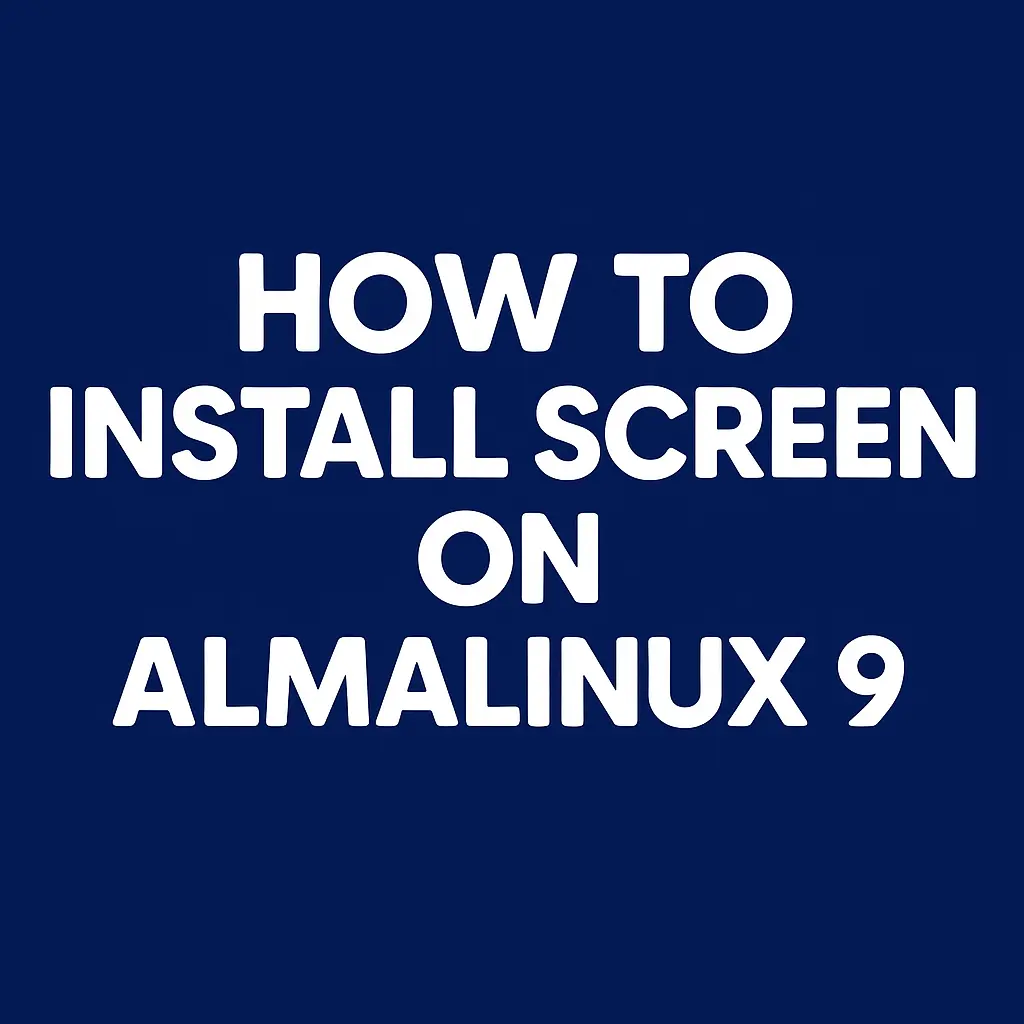How to Install Screen on AlmaLinux 9

System administrators and DevOps engineers frequently need to run long-running commands or maintain persistent terminal sessions. GNU Screen solves this by allowing you to detach and reattach terminal sessions, ensuring processes continue running even when you disconnect.
What is GNU Screen?
GNU Screen is a terminal multiplexer that enables users to create multiple virtual terminal sessions within a single SSH connection. It allows you to detach from a session while keeping processes running, then reattach later from any location. Screen is essential for managing remote servers where network interruptions could terminate critical operations.
Key Features
- Session persistence: Processes continue running after disconnection
- Multiple windows: Run several commands in separate windows within one session
- Session sharing: Multiple users can attach to the same session
- Scrollback buffer: Review command output history
- Copy-paste mode: Copy text between Screen windows
Installation
Update your system packages:
sudo dnf update -y
Install the EPEL repository:
sudo dnf install epel-release -y
Install Screen using the DNF package manager:
sudo dnf install screen -y
Verify installation:
screen --version
Basic Usage
Start a new Screen session:
screen
Start a named session for easier identification:
screen -S mysession
Detach from current session (press Ctrl+A then D):
# Inside screen, type: Ctrl+A, then D
List all Screen sessions:
screen -ls
Reattach to a session:
screen -r
Reattach to a specific named session:
screen -r mysession
Create a new window within Screen (press Ctrl+A then C):
# Inside screen, type: Ctrl+A, then C
Switch between windows (press Ctrl+A then N for next, P for previous):
# Inside screen, type: Ctrl+A, then N or P
Operational Tips
- Long-running tasks: Use Screen for database migrations, backups, or compilation tasks that take hours
- Remote operations: Always start Screen before running critical commands over SSH to prevent disconnection issues
- Session naming: Use descriptive names like
screen -S db-backupto identify sessions easily - Logging: Enable logging with
Ctrl+A Hto capture session output to a file - Configuration: Customize Screen behavior in
~/.screenrcwith settings like scrollback buffer size and default shell
Common Commands
- Kill a window:
Ctrl+AthenK - Lock screen:
Ctrl+AthenX - Enter copy mode:
Ctrl+Athen[ - Split screen horizontally:
Ctrl+AthenS - View window list:
Ctrl+Athen"
Conclusion
GNU Screen provides essential session management capabilities for AlmaLinux 9 administrators. By maintaining persistent terminal sessions, you ensure critical operations complete successfully regardless of network stability. For intelligent incident management and automated issue resolution, consider using Akmatori, an open-source AI agent platform that helps SRE teams respond to infrastructure incidents faster.
FAQ
What's the difference between Screen and tmux?
- Both are terminal multiplexers. tmux offers more features and active development, while Screen is simpler and more widely available by default.
Can I share my Screen session with another user?
- Yes, use multi-user mode with
screen -x sessionnameto allow multiple users to attach simultaneously.
- Yes, use multi-user mode with
How do I increase the scrollback buffer?
- Add
defscrollback 10000to your~/.screenrcfile to set the buffer to 10,000 lines.
- Add
